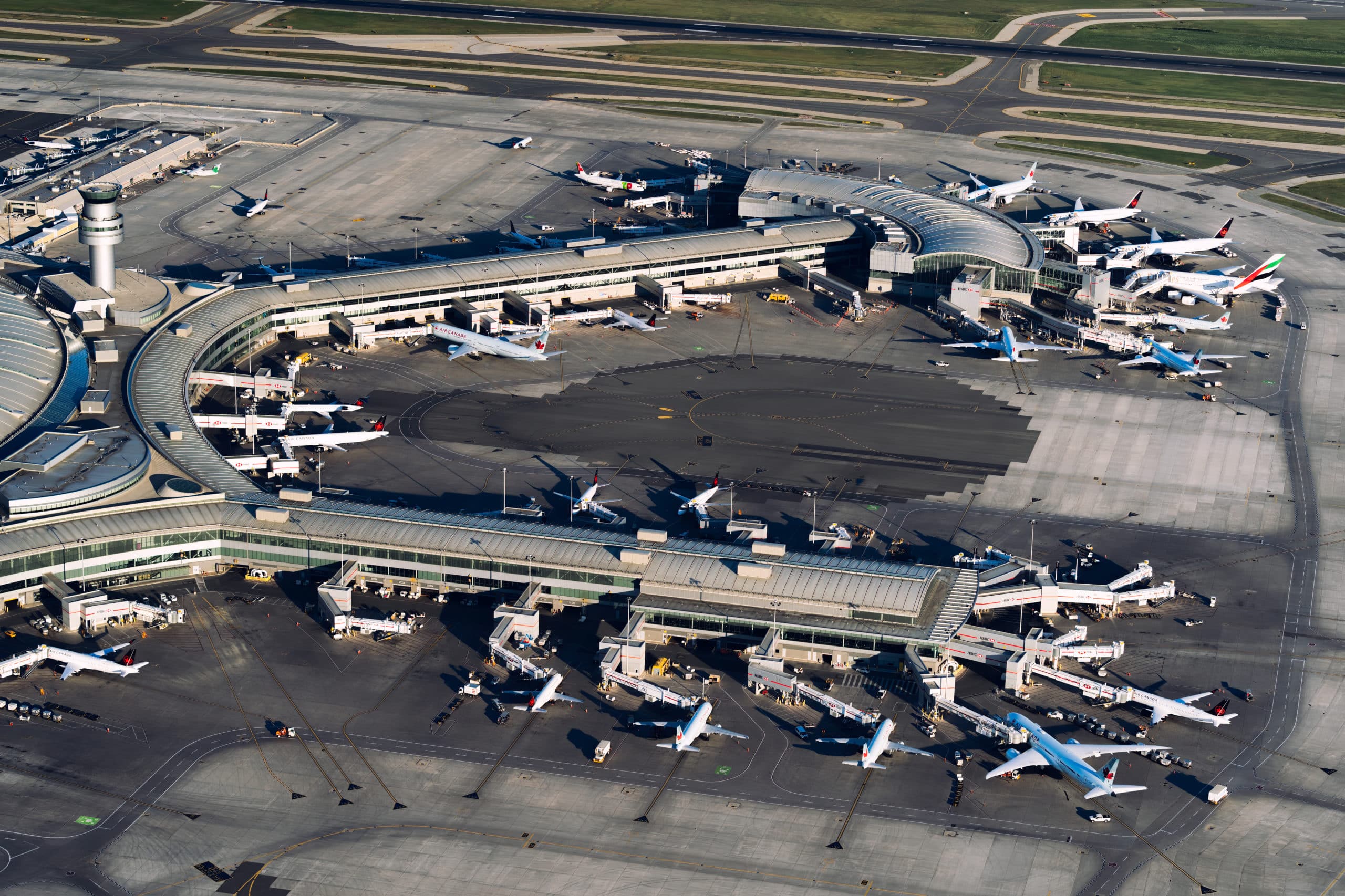Airlines plan their flight schedules ahead of time on the basis of seasonal timetables. For a uniform definition and implementation of these timetables, the International Air Transport Association (IATA) has set “schedules” annually based on seasons, as well as on certain dates and events.
Let’s take a closer look at IATA schedules and explore why you should know about them, even if you’re just an occasional traveller.
What Are IATA Schedules?
As the name suggests, IATA schedules are set by the International Air Transport Association (IATA), which “represents, leads, and serves the airline industry.”
Airline membership in IATA is optional, but even non-member airlines largely follow the schedules and other standards set by the organization (such as airport and airline codes) in order to be consistent with the rest of the industry.

One of IATA’s key roles is to create and maintain the schedules that coordinate the comings and goings of a huge portion of commercial air traffic.
To understand IATA schedules and why they’re important, there are a few key things you’ll need to know.
First, IATA schedules follow two seasons based on the Northern Hemisphere, where an estimated 90% of the global population lives. Hence, when you hear about a “winter timetable” or “summer schedule” as they pertain to flights, they refer to the winter and summer months in the Northern Hemisphere.
Next, IATA schedules are abbreviated as “NW” and “NS” for Northern Hemisphere winter and summer, respectively, with the last two digits of the associated years appended to them (e.g., NW25/26 for the winter timetable from 2025–2026). Technical publications and websites within the industry, such as AeroRoutes, use these abbreviations.
Based on when the European Union starts and ends its daylight savings time, IATA schedules are defined as follows:
- Winter schedule: from the last Sunday of October through to the last Saturday of March of the following year
- Summer schedule: from the last Sunday of March through to the last Saturday of October of the same year
This means that the upcoming IATA schedules are as follows:
- Winter 2024/2025 (NW24/25): October 27, 2024 (Sunday) to March 29, 2025 (Saturday)
- Summer 2025 (NS25): March 30, 2025 (Sunday) to October 25, 2025 (Saturday)
- Winter 2025/2026 (NW25/26): October 26, 2025 (Sunday) to March 28, 2026 (Saturday)
- Summer 2026 (NS26): March 29, 2026 (Sunday) to October 31, 2026 (Saturday)
Airlines then use these IATA schedules as the basis for their seasonal timetables, which are responsive to market demand.
For example, in Canada, Air Canada’s and WestJet’s winter timetables are largely composed of flights to Sun destinations, such as Cancun and Punta Cana, while their summer timetables are composed of many non-stop flights to Europe.

As you can see, each season focuses on the preferred destinations for the airlines’ clientele.
Airlines also utilize IATA schedules as a basis for opening ticket sales. While most airlines open ticket sales as far as a year in advance, many airlines also release tickets in accordance with the IATA schedule.
This is why you’ll see some airlines only making tickets available until the subsequent October (the end of summer schedule) or March (the end of winter schedule).

Lastly, IATA schedules are also crucially used for “slot coordination,” which ensures airlines use their right to take-off at airports, especially busy ones, effectively.
Slot coordination is a highly technical process, so for the purpose of this article, we won’t delve into it too deeply.
But essentially, prior to the start of each season or schedule, IATA convenes what’s called a “slot conference,” during which airlines and other industry stakeholders meet to coordinate, among other things, the take-off and landing slots at airports.
Airlines must submit their airport slot requests ahead of these conferences and the start of the upcoming IATA schedule, so that they can operate their flights and timetables without any hurdles.
These slot requests are of particular importance for airports that receive plenty of traffic, and these airports are classified as Level 2 (schedules-facilitated airports) and Level 3 (coordinated airports). Level 1 airports (non-coordinated airports), meanwhile, generally receive lower demand.
About 50% of all passengers depart from a Level 3 airport, and examples of these are Toronto (YYZ) and New York (JFK). An airport is categorized as Level 3 when the capacity demand (from the customers/airlines) significantly exceeds airport capacity.

This demand makes it crucial that all departures and arrivals times (i.e., slots) are tightly coordinated and organized across all airlines.
Comparatively, Level 2 airports, such as Montreal (YUL) and Orlando (MCO), are designated as such when they receive enough traffic that there is potential for congestion during some periods of the day, week, or season.
This makes it important for these airports to be highly organized but not to the same degree as a Level 3 airport. If slots at Level 2 and Level 3 airports are left uncoordinated, airport operations will be inefficient, and passengers and aircraft will face delays.
If you’re interested in learning more about airline slot coordination and which airports are considered Level 1, 2, and 3, you can check out IATA’s website.
The Importance of IATA Schedules
You might be wondering how these technical-sounding IATA schedules might matter to you as a casual traveller. Well, here are a couple of ways.
Flight Availability
Generally, there are two types of scheduled air routes: year-round and seasonal.
Year-round flights are those that have consistent demand, regardless of season. In Canada, examples of these are transcontinental routes, including Toronto (YYZ) to Vancouver (YVR) and to Calgary (YYC). You can book these flights as far as a year ahead, either with cash, miles, or points.
In contrast, seasonal routes, as the name suggests, are only offered in certain months in relation to their seasonal demand. A good example of seasonal routes are flights from Canada to Florida, which ramp up during the winter months to ferry Canadian “snowbirds” to warmer climates.

But regardless if they’re year-round or seasonal routes, you’ll notice that there’s always a shift in an airline’s overall operating schedule at the beginning and end of each IATA schedule.
This is especially noticeable among airlines in countries with more defined summers and winters like Canada and the US, where people tend to escape the winter cold for tropical destinations and vacation in Europe in the summer.
Airlines in these countries may reduce the frequency of year-round flights to reallocate aircraft to seasonal routes, and at the end of that season’s timetable, they may stop flying these seasonal routes altogether or reduce them significantly. Airlines may also launch new routes around the same time as the start of the IATA schedules.
To better illustrate this premise, let’s take a look at what happens in Canada, using data from aviation analytics company Cirium, and focusing on the prime example of flights between Canada and Florida.
Comparing the time periods of November 1, 2023, to March 31, 2024 (roughly the IATA winter schedule), and April 1, 2024, to October 31, 2024, (roughly the IATA summer schedule), we see that mainline Air Canada flew 353% more flights to Florida in the winter, Flair flew 134% more, and WestJet flew 32% more. This is despite the fact that the winter season is shorter than the summer season.
Interestingly, Air Canada largely shifted its Florida services to its subsidiary Air Canada Rouge for Summer 2024, seemingly to free up its more premium planes for its seasonal summer services to Europe.

This shows how airlines shift their schedules according to demand, among other factors, and in alignment with IATA schedules.
Armed with this knowledge, you’ll be better able to understand why you’re more likely to snag a non-stop flight to a European destination like Athens (ATH) from Montreal (YUL) in the summer than in the winter, and why this route likely begins in March and ends in October each year.
As discussed above, you’ll also see how flights to Florida are more abundant between October and March, corresponding to the IATA winter schedule, and how you can snag better deals with the abundance in supply.

Changes and Cancellations
Airlines sell seats to their flights up to a year ahead since the flights have been planned by the airline long before; however, some of these flights are still speculative, which could mean that the airlines are still gauging passenger interest (based on sales) or that they haven’t yet secured the necessary regulatory approvals to actually fly the route.

These two reasons are primarily why you might receive notices of changes or cancellations to your flights, especially if you booked far in advance.
Some airlines may even put up disclaimers that flights are subject to change or government approvals.

However, these changes and cancellations become few and far between as the start to the IATA schedule draws near. This is because by the start of IATA schedules, airlines have already firmed up their timetables and have likely secured the necessary approvals, such as airport slots.
Plus, airlines don’t want to anger passengers by making drastic changes near their travel date.
That said, purchasing your flights closer to the start of IATA schedules will mean your flights are less prone to changes and cancellations. If there’s going to be changes after this time, they’ll be mostly ad-hoc and one-offs, rather than widespread changes, such as cancelling routes altogether.
For example, if you wanted to be sure that your summertime flight from Halifax (YHZ) to Europe is operating on the day you wanted because your vacation days are precisely allocated, your best bet is to book closer to the start of the IATA summer schedule, which is in March.

By then, the airline has already coordinated the necessary airport slots and has had enough time to sell seats and gauge if enough people are interested in the route.
Conclusion
The International Air Transport Association (IATA) has set “schedules” that airlines around the world follow, and these schedules are based on winter and summer seasons in the Northern Hemisphere.
Even as an occasional traveller, it’s important for you to be aware of how IATA schedules work, in large part because they dictate the flight schedules and availability for nearly every airline in the world. They can also roughly predict if your flight will encounter changes and cancellations or not.
We hope this article has given you a solid understanding of IATA schedules, and that you now have more knowledge to help you when you book your next trips.




















